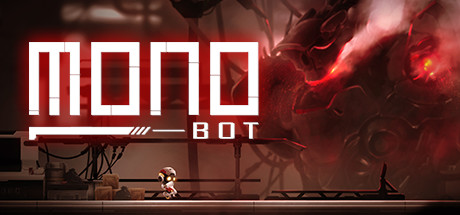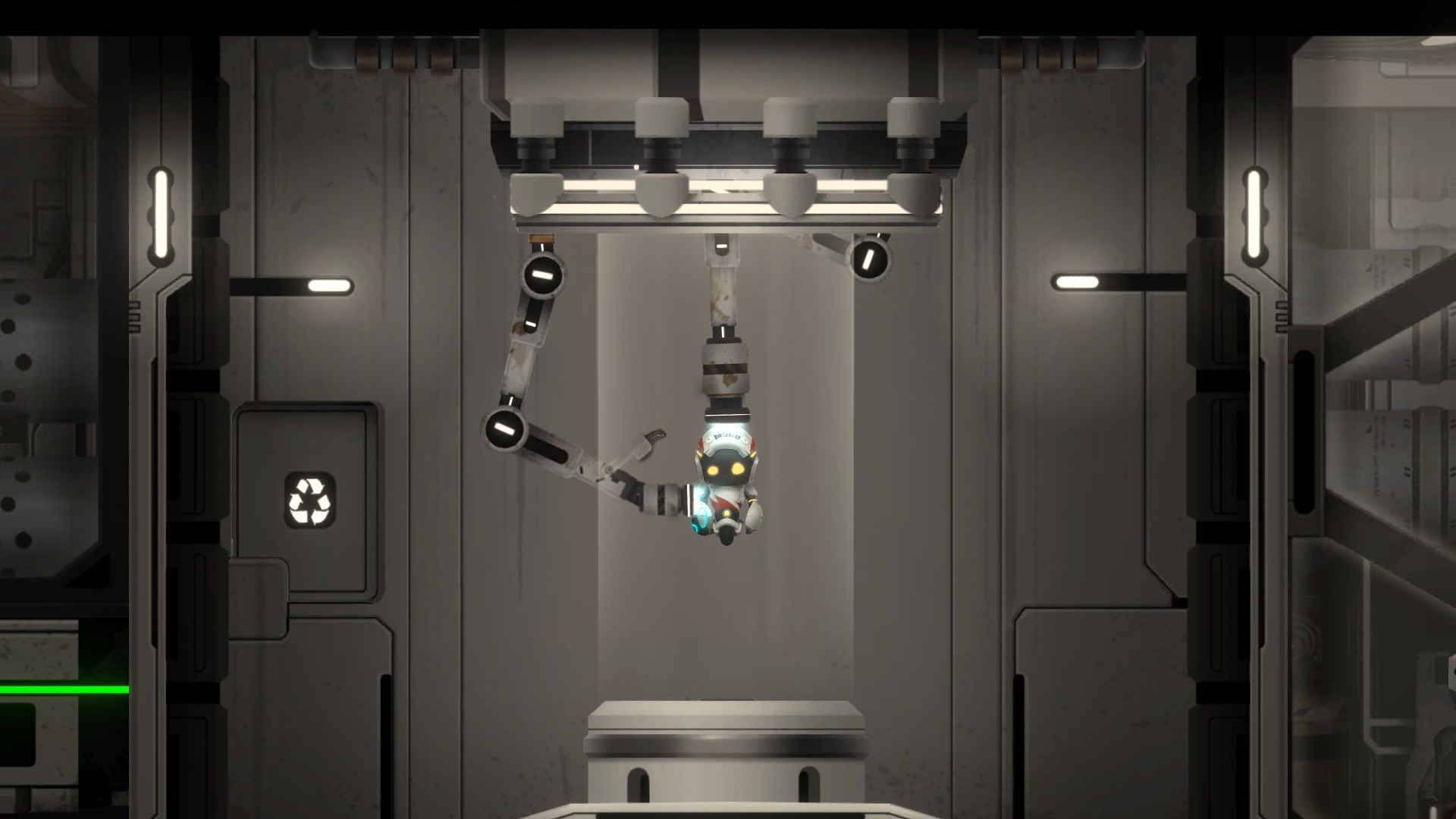
Monobot
Monobot is a charming physics side-scroller platformer developed by the small indie dev team of DreamSmith Studio, which tells the story of a little robot and its journey towards self-awareness.

You play as Mono – a “Modularized Orientative Non-weaponized Operator” robot that wakes up in the 24th century in a warehouse ruled by other machines. Initially, Mono can only pull or push cubes, climb ropes, open trapdoors and activate elevators. As the game progresses, each of his arms will be replaced by functional modules that will allow Mono to gain two new abilities. The first one is a mechanic similar to a grappling-hook, where Mono can attach himself for a few seconds to certain areas and is pulled towards them like a magnet, while the other one is a small-range teleport ability which allows him to switch places with a targeted cube. All of these mechanics will be heavily used throughout the whole game in solving puzzles of various difficulties or dodge the only type of enemy – a sentry robot – which requires you to move stealthily around it. Most of the puzzles are not extremely difficult to figure out, but since Monobot is a physics platformer, they often require a lot of precision, timing and control over your movements. Many of these puzzles also have a certain amount of iterations / steps, and failing one of them will have you start it from scratch again. The game has a very good autosave system, and these checkpoints are encountered often enough, but you will usually still need to replay the whole puzzle if you happen to fail a jump – which will occur quite often during your first playthrough. Monobot is a game in which you don’t really know what to expect next and in which you learn by failing and retrying.

For a physics platformer which requires a lot of concentration and composure, Monobot’s story is surprisingly emotional. Perhaps designed with a nostalgia for WALL-E’s girlfriend robot Eva, the tiny robot manages to convey a wide range of feelings through its little animations and expressive facial expressions. Mono is capable of communicating deep sadness, fear, surprise, happiness, and what’s more astonishing is that these feelings are communicated solely through motions of his yellow LED eyes and through his body, thus crossing all language barriers. In fact, the whole story is revealed without any spoken dialogue, aside from a few cutscenes and some notes that you can find scattered around and which act as collectibles. From the first heartbreaking scene of Mono finding himself sliding down a huge pile of inactive robots identical to him, until the poignant and mystical ending sequence of finding his true self, Mono’s story is impactful, even more so considering his loneliness of being the only self-aware entity among others of his own kind.

Monobot’s sci-fi world is devoid of any human presence – it’s a dark and cold world ruled by robots, with its stillness broken only by the rhythmic clunking of machines, the buzzing of activated buttons or levers, the humming of a moving elevator or the soft whirring sound of Mono’s wheel. Even though the game has an astonishing soundtrack to support Mono’s heart-warming journey, Monobot truly excels in creating immersion solely through machine sounds and through a well-thought contrast between the overwhelming silence and the soul-stirring score that triggers only at the right moments.

I enjoyed playing Monobot despite the fact that this immersion was often broken by my struggles to overcome a certain platforming sequence / puzzle. The controls are ok, but not always great and sadly this further hinders the progress in certain sections. There are often cases in which you have to press specific buttons at specific times, and a millisecond of latency in your reactions will cost you the whole attempt. The jumping controls are on spot, but the additional controls of activating levers by rotating the left stick feel clunky. There are often long sequences of button presses in which you need to switch abilities at the right moment, have the right momentum for a certain jump or time your actions perfectly, and all these are rarely done properly from the first try. I died a lot and with such a beautiful game, I would have much rather preferred an easier approach, so I can experience the story more smoothly. In fact, when I picked up the game, I was expecting a GRIS-like experience, where the gameplay difficulty does not hinder the storytelling at all, but Monobot’s demanding pace rather makes it a challenging platformer and less of an atmospheric encounter.

Apart from improving the gameplay difficulty, another thing that I wish was done better is the collectibles system. While in the main menu there is an overview of all the notes you managed to find, there’s no way to replay a certain section after the end of the game, in order to grab the missing ones. Additionally, some of these notes are well hidden and can be reached only at specific spots in your playthrough – basically if you happen to press a lever, you might not be able to reach a note that you just passed and missed. For achievement collectors, this means that you depend heavily on a guide and on checking in advance where you have to go – which again breaks the whole fun of experiencing the game by yourself. Achievement hunters are also punished by having to play the game without dying – which in this context it’s quite difficult to achieve.
Monobot is a game that is well-worth your attention, although keep in mind that playing it will require a certain amount of patience / skill. On average, it’s a 4-5h long gameplay that could take as long as 10h for less experienced players or as short as 1.5h for a speedrun without dying. Undoubtedly it is a one-of-a-kind of experience, and overall a great game albeit some minor flaws.